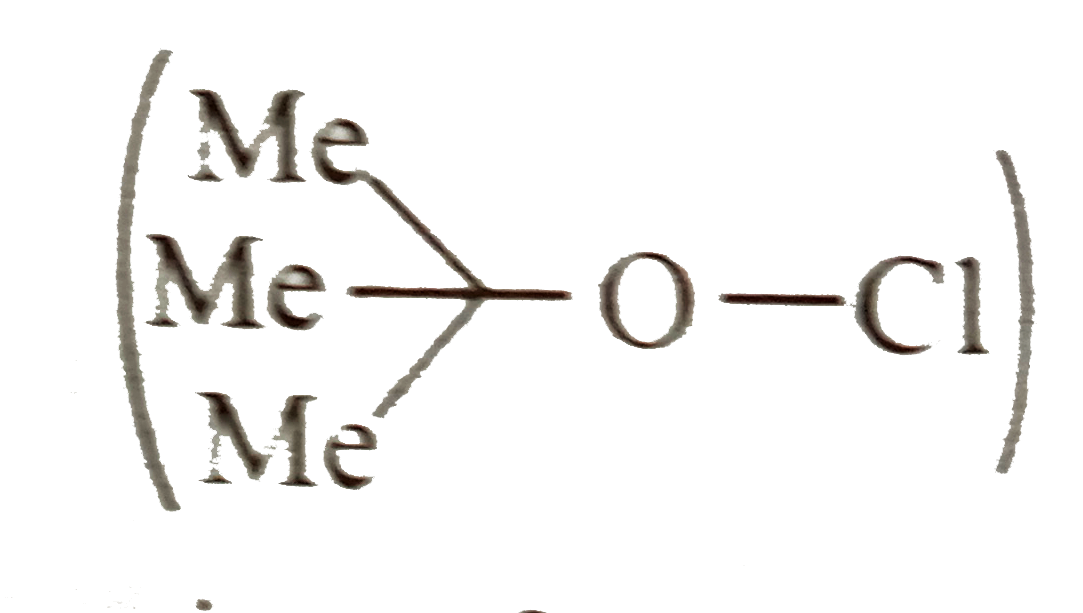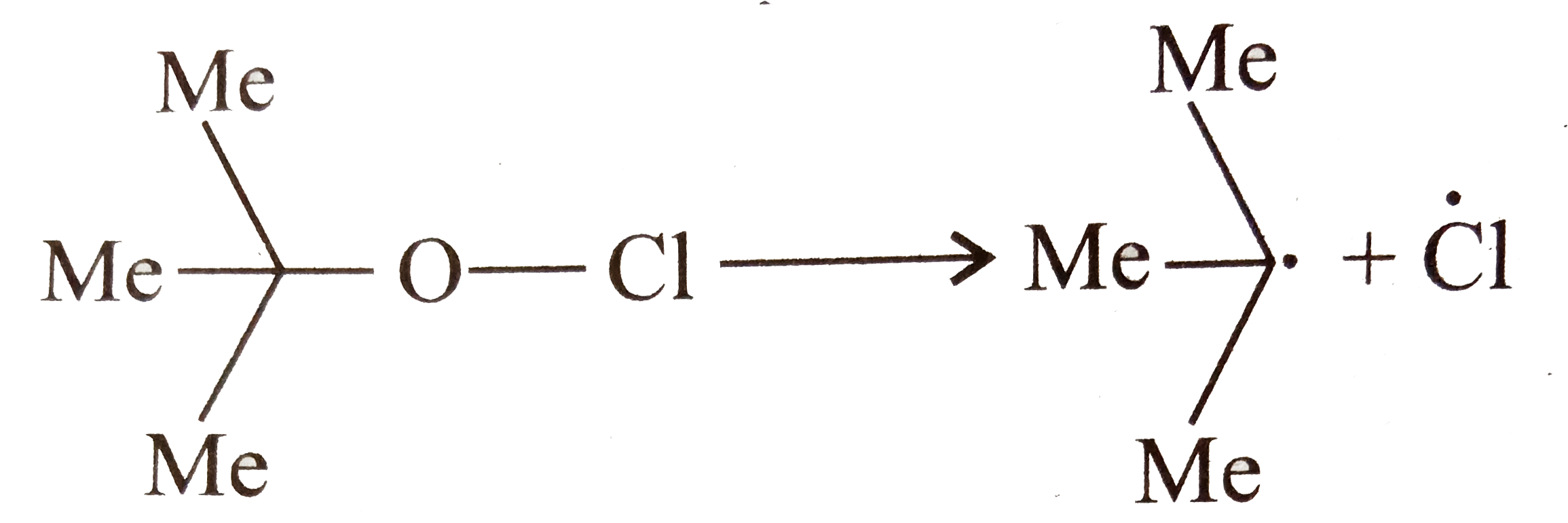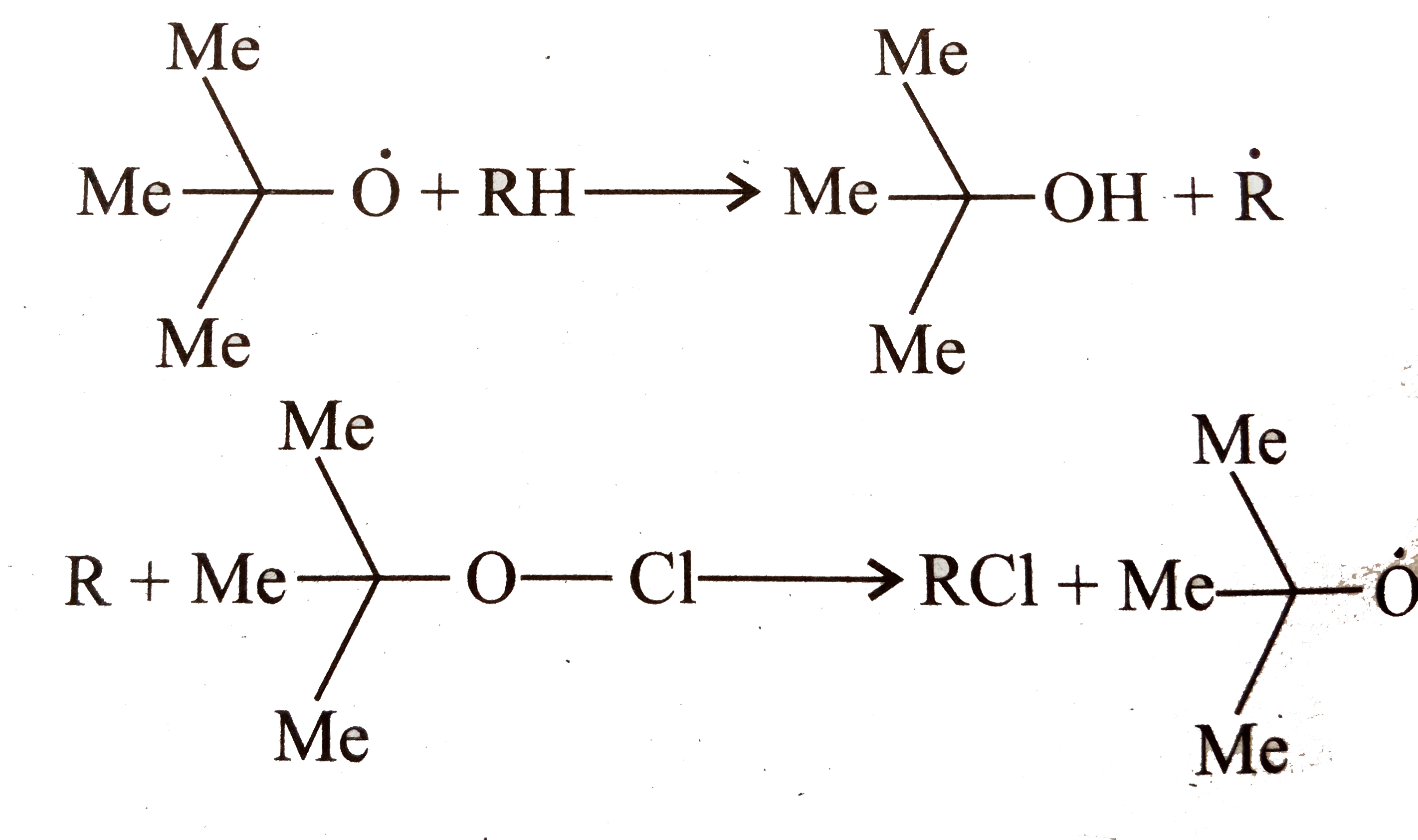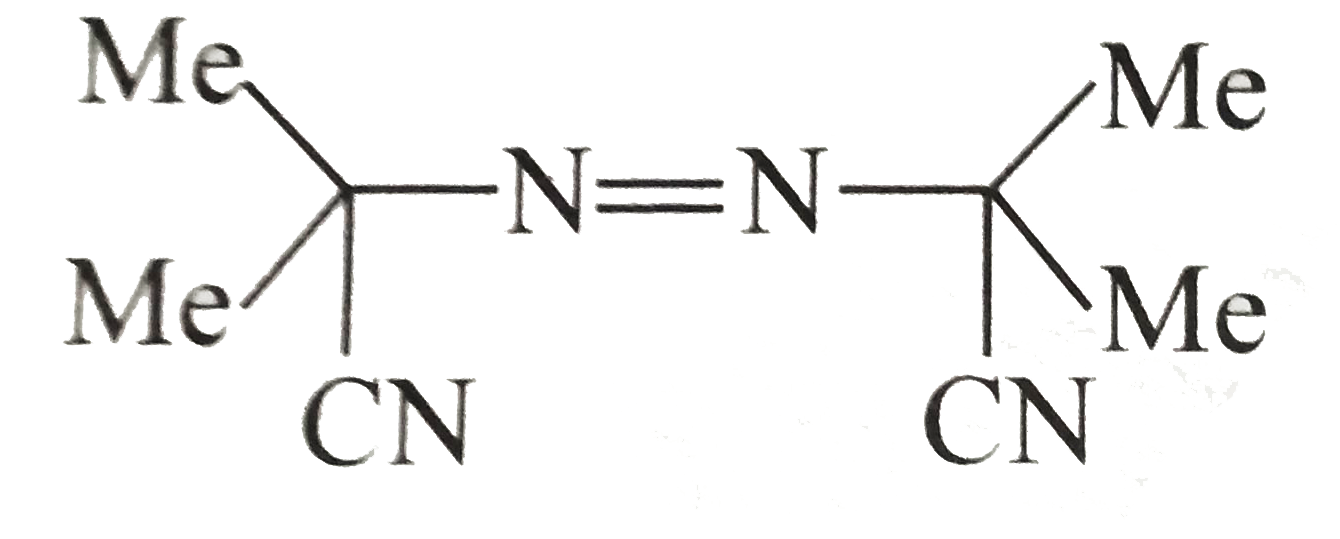Alkanes are monochlorinate with t-butyl hypochlorite
 as a radical intiator. Give the mechanism of the reaction.
as a radical intiator. Give the mechanism of the reaction.
Chain-intiation step:

Chain-propagation step:

Topper's Solved these Questions
- ALKANES AND CYCLOALKANESBOOK - CENGAGE CHEMISTRYCHAPTER - ALKANES AND CYCLOALKANESEXERCISE - Paragraph for problem
24 Videos
- ALKANES AND CYCLOALKANESBOOK - CENGAGE CHEMISTRYCHAPTER - ALKANES AND CYCLOALKANESEXERCISE - True and False
1 Videos
- ALKANES AND CYCLOALKANESBOOK - CENGAGE CHEMISTRYCHAPTER - ALKANES AND CYCLOALKANESEXERCISE - SOLVED EXAMPLES
19 Videos
- ALKENES AND ALKADIENESBOOK - CENGAGE CHEMISTRYCHAPTER - ALKENES AND ALKADIENESEXERCISE - Single correct Answer
14 Videos
Similar Questions
Knowledge Check
Both ionic and free radical mechanism involve in the reaction -
AChlorination of alkaneBWilliamson’s synthesisCElectrolysis of potassium acetateDFriedel-crafts reaction3-Methylpentane on monochlorination gives four possible products. The reaction follows free radical mechanism.The relative reactivities for replacement of -H are 3∘––:2∘––:1∘–– =6:4:1.

Relative amounts of A,B,C and D formed areA6/31,16/31,6/31,3/31B16/31,6/31,6/31,3/31C6/31,16/31,3/31,6/31D6/31,3/31,6/31,16/31
_E01_072_Q01.png)
Give mechanism of this reaction.
View SolutionGive the product and propose the mechanism of the following reaction.

View SolutionAn alkyl halide is reduced to the corresponding alkane by tributyl stannane (C4H9)3SnH and by a free radical menchanism in the presence of an initiator, an azo compound

that breaks down to N2 and a radical. Give the mechanism of the reaction.
View SolutionWhen a mixture of 2-merthyl propane and CC14 is reacted at 403-413 in the presence of a radical intiator, t-butyl peroxide, 2-chloro-2-methyl propane and chloroform (CHC13 are formed. Give the mechanism of the reaction.
View SolutionGive the mechanism of the Reimer Tieman reaction on indole.
View Solution(i) Give the mechanism for the reaction of acetyl chloride with ethyl alcohol.
(ii) Give the mechanism for the Hofmann bromamide reaction.
(iii) Give the mechanism of estrification
(iv) Give the mechanism of basic hydrolysis of an ester.
or
Give the mechanism of saponification.
(v) Give the mechanism of acid hydrolysis of an ester.
View Solution


